Kia Niro: Lane Departure Warning System (LDWS) / Repair procedures
| Service Point Target Auto
Calibration (SPTAC) |
This procedure provides a way to calibrate the camera by having the service technician
align the car to a well lit simulated straight road target; preferably wall mounted.
The LDWS camera will have a "System Out of Calibration" DTC set if not operating
within specified tolerances.
The LDWS will be supplied for field service replacement with the "System Calibration
Required / Variant Coding Error" DTC set if it is a replacement part delivered directly
from supplier manufacturing.
| 1. |
Guidelines for Selecting a Suitable Target
In order for LDWS Service Calibration-Static routine to complete successfully,
the following conditions are required:
| – |
Target (SST : 09890-3V100) surface must be perpendicular to the
camera in both horizontal and vertical orientation to maintain maximum
of 1° roll.
|
| – |
Target to be mounted to rigid backer material to maintain flatness
requirements.
|
| – |
Target must have reflective markings (not faded or poorly painted)
to represent lane features.
|
| – |
Target size is 30 cm wide by 100 cm high.
|
| – |
Mounting area must NOT have cross hatch patterns or textual markings
near the target.
|
| – |
Target should be well lit for optimal performance using non-fluctuating
illumination. There shall be no continuous shadow casted on the
target.
|
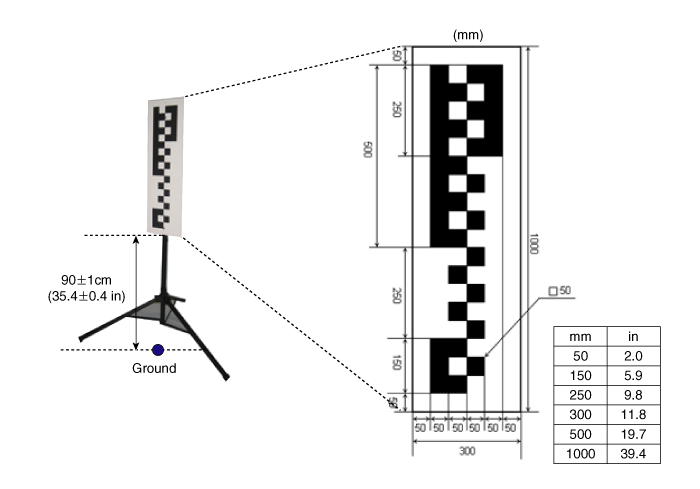
|
| 2. |
Service Point Target Auto Calibration Procedure
| (1) |
It is recommended to check vehicle toe-in and tire pressure levels
to ensure proper alignment of the camera to the "world" before proceeding
with calibration. The vehicle to run the calibration routine is
to be at nominal production loading capacity.
|
| (2) |
Windshield must be clean and silk-screen checked so that there
is no blockage of the camera.
|
| (3) |
Service technician connects the diagnostic connector and starts
the vehicle. The camera module should not be activated by pressing
the switch.
|
| (4) |
The service calibration routine may not run correctly if any
system level fault is active.
|
| (5) |
If working with a replacement ECU: the service technician initiates
the SPTAC Reset configuration.
|
| (6) |
Service technician either aligns the vehicle to the target or
the target to the vehicle.
| a. |
Bottom of the target is to be 90 ±1cm (35.4 ± 0.4in)
from the ground and aligned with the camera lens horizontal
axis.
|
The target (A) is placed along the vehicle’s
longitudinal axis (centerline) within ±3cm (±1.2
in) of target center. (Horizontal deviation (B)
: ±3cm (±1.2 in))
|
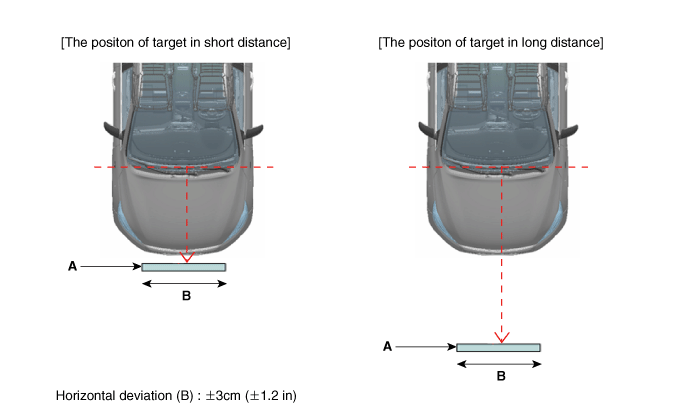
|
| b. |
The positon of target (A) in short distance is 0 ± 5cm
(0 ± 2 in) (B) in front of front bumper.
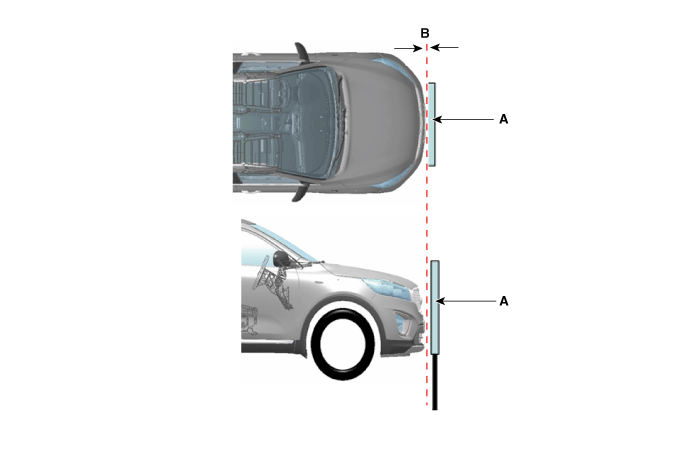
|
| c. |
The positon of target (A) in long distance is 100 ± 5cm
(39.4 ± 2 in) (B) in front of front bumper.
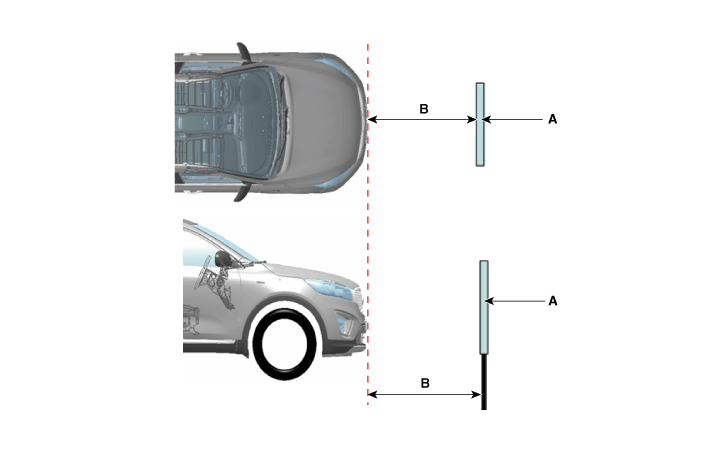
|
• |
The tolerance angle of target in horizontal
direction is ± 10°.
|
|
• |
The tolerance angle of target in vertical
direction is ± 5°.
|
|
• |
The tolerance angle of target in facade
center is ± 1°.
|
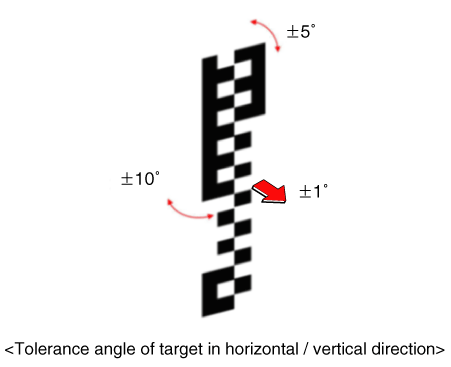
|
|
|
| (7) |
After confirming the calibration target location in close distance,
click "OK" on diagnostic device.
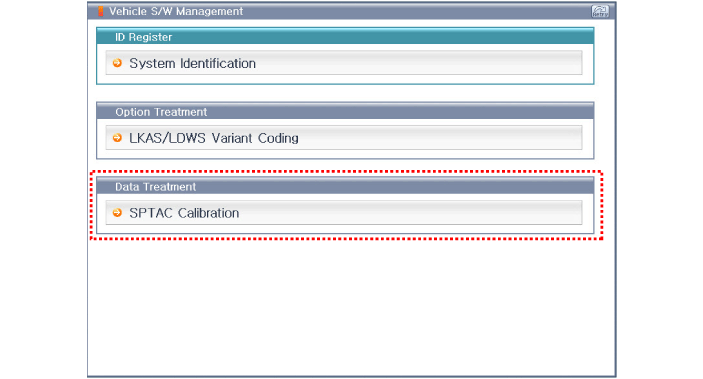
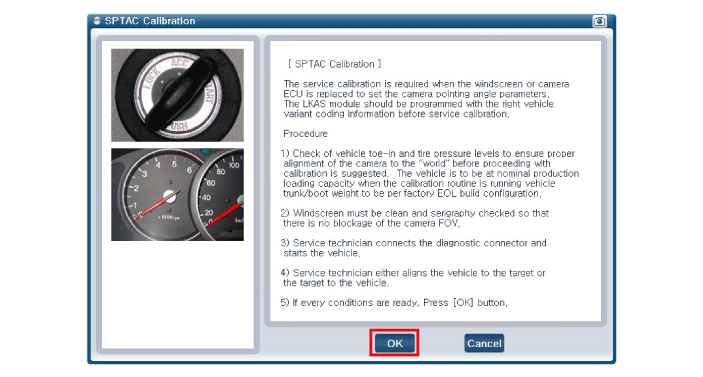
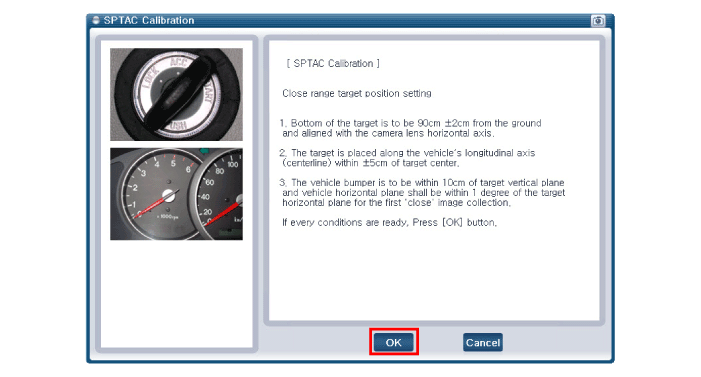
|
| (8) |
Technician ensures target placement location and checks the "OK"
message on the diagnostic tool (KDS/GDS).
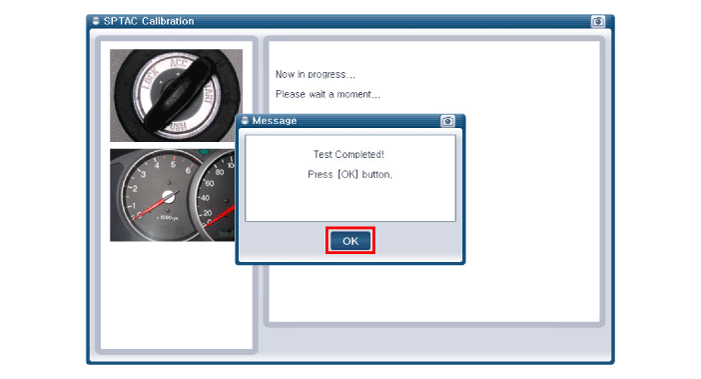
|
| (9) |
After confirming the calibration target location in remote distance,
click "OK" on diagnostic device.
(Perform location calibration 2 times.)
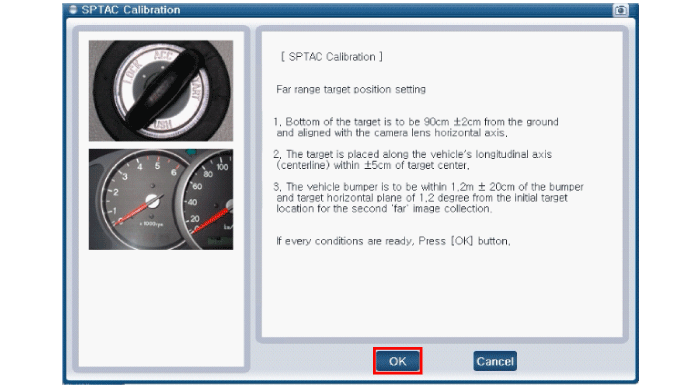
|
| (10) |
Technician ensures target placement location and checks the "OK"
message on the diagnostic tool (KDS/GDS).

|
| (12) |
Turn off IGN and then on.
|
|
Test Drive
|
System may not activate properly in the following conditions:
| • |
In case lane is not visible due to glare or heavy rain.
|
| • |
In case the road is covered with snow.
|
| • |
In case puddle on the road surface reflects street light or head
light from oncoming vehicle.
|
| • |
In case there is blocking object such as sidewalk on the side
of the road.
|
| • |
In case there is trace of more than one lane due to road repair.
|
| • |
In case the distance to the foregoing vehicle is very short.
|
| • |
Be sure to perform test drive to check for normal operation after
performing optical angle test.
|
| • |
Drive on straight road (of longer than 500 m) with 2 white or
yellow lane marks at speed of over 64 km/h (40 mph), and check for
the alert as you intentionally steer close to the lane mark.
|
| • |
LDWS operates properly if the lane mark segment space is less
than 8m.
|
| • |
LDWS activates at vehicle speed above 60 km/h.
|
| • |
Perform test drive on car-only road or on a highway.
|
|
Description
System block diagram
Components of LDWS
No
Item
Function
Position
1
LDWS Unit
...
 Description and operation
Description and operation












